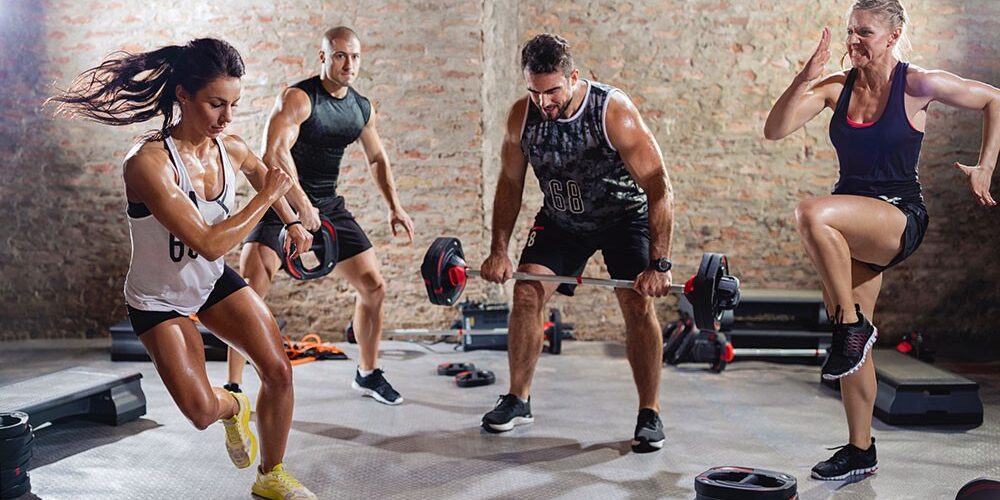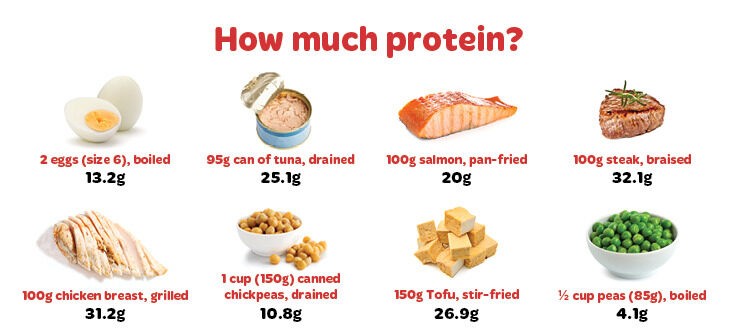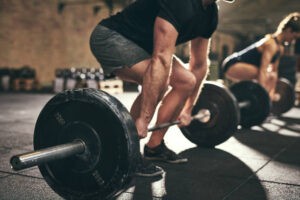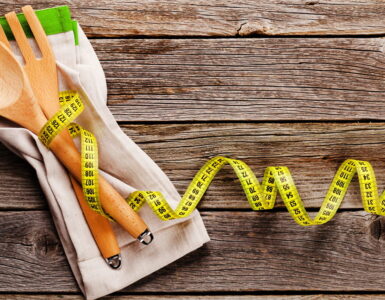“I wish my fat tissue turned into a muscle mass as easily as I gain weight”. That’s probably how many of us feel when having excess body fat and lack motivation for active steps toward the goal. While some people blame bad genetics and big bones for that, others get closely acquainted with the body recomposition program, which helps you lose fat and gain muscle mass. Building muscle was never easy; however, it’s possible to achieve by putting enough effort into planning, training and diet. Let’s follow the article together and find out how to lose fat and build muscle at the same time, how many calories you need a day and what supplements can be helpful for your body support.
Page Contents
What Is Body Recomposition?
Body composition is the percentages of bones, muscle and fat tissue, and water in a human body. Muscular tissue takes less space than fat tissue and determines our leanness. Two people of the same age, sex, height and body weight can look different because they have different body compositions.
Body composition is a term used by both the fitness and health industries. It helps to measure your health level. If you have a prevailing amount of fat tissue, it may lead to illnesses like diabetes and heart problems.
See also — Body types of athletes.
When thinking about body fat, we mainly consider scales and BMI as the primary sources of information. However, they are not precise, giving just a general overview of your weight: underweight, normal weight, overweight or obese.
Let’s imagine two people with the same height and weight: their BMI will be identical. However, one may look leaner, and the other a bit more round. It’s evident that the former one has more fat mass.
To have more accurate information, doctor and personal trainers use a more advanced approach – defining body composition with the help of different tools.
- Skin calipers – measure the skinfold thickness in the places where stored fat is commonly found (saddlebags, love handles, tummy). Skin calipers are pretty accurate, but human error can take place.
- Underwater weighing – one of the most accurate methods using special equipment and Archimedes principle (finally, a moment to apply Physics knowledge 🙂) – the buoyant force on a submerged object is equal to the weight of the fluid that is displaced by the object. People with more fat tissue will weigh less underwater and are more buoyant. Someone with more muscle tissue will weigh more underwater.
- A body pod – is a computerized, egg-shaped device to measure your weight and volume to determine your body density and calculate body fat [1].
- Dual x-ray absorptiometry (DEXA) scan – low-level x-rays measure how much body fat, muscle, and bone are in your body.
- Bioelectrical impedance – electrical currents are sent through your body, and their speed is measured to define your body fat. This is the cheapest method after skin calipers.
Women naturally have more fat tissue than men.
Now, understanding what body composition is, we can easily conclude that Body recomposition is changing the proportion of fat and muscles tissue in order to get a leaner body, to be more precise – to lose fat and gain muscle at the same time, changing the proportions to a healthier limit.
How To Do A Body Recomposition?
Body recomposition is possible for everyone who puts enough effort into training and proper dieting. It goes easier for newbies as their muscles are more responsive to the training. Let’s see how we can pull this off.
1. Eat Enough Protein
Body recomposition is the process of losing fat and gaining muscle mass (or maintaining it). It looks like an equation with exercising and nutrition having the leading roles. When your goal is to lose fat and build muscle, everything is important.
Nutrition is the source of your energy. In order to reach a proper form, you need to plan your daily menu meticulously, considering your levels of activity and fitness goals.
All types of food can be divided into the categories of macronutrients (macros), which represent carbohydrates, fat and protein. Each of them has a specific function in our body and a different effect.
Despite a common belief that with the protein intake only you’re gonna gain muscle mass, without carbs – which are preserving muscle mass function – your effort will be futile. On training days, consuming proteins for muscle recovery and carbs is essential because you expend more energy. Otherwise, your body will extract energy from muscles, and they will shrink.
You will be interested in the article — Dr Now diet.
Planning body recomposition macros defines your diet and helps avoid spontaneous eating.
All macronutrients are measured in grams:
- 1 gram of protein (P) gives 4 calories
- 1 gram of carbohydrates (C) – 4 calories
- 1 gram of fat (F) – 9 calories
Training Day Calories Intake
Let’s say you need 2000 calories for a training day and 1500 for a rest day.
Protein intake |
|
Carbohydrates intake |
|
Fat intake |
|
A person with 120 pounds needs
Protein 120×1.5=180 (grams) x 4 = 720 calories
Carbohydrates 120×1.5=180 (grams) x 4 = 720 calories
Fats 720+720 = 1440 2000-1440=560 calories /9=62 grams of fat
So, Training Day Macros – 180 P/180 C/ 62 F (in grams).
Rest Day Calories
Protein intake |
|
Carbohydrates intake |
|
Fat intake |
|
A person with 120 pounds and 7% fat needs
Protein 120×1.5=180 (grams) x 4 = 720 calories
Carbohydrates 120×0.5=60 (grams) x 4 = 240 calories
Fats 720+240 = 940 1500-940=560 calories /9= 62 grams of fat
So, Rest Day Macros – 180 P/60 C/ 62 F (in grams).
As you see, carbs intake on training day is significantly higher, as, without this energy, your outcome will suffer.
2. Keep Track Of Your Weekly Target Calorie Balance
If you want to build muscle and lose fat simultaneously, you need to create a slight calorie deficit. Higher deficits will provide more fat loss, but it will put brakes on muscle gain.
Ideally, you need to lose some fat while enabling muscle gain.
For most people, a maximum daily calorie deficit is around 500 calories. It’s just enough to lose fat slowly but surely, and it has no harmful effect on your health – a win-win situation. If you start aiming for more, your results may be unstable, and workouts will not show a desirable result due to the lack of energy and gradual exhaustion. The number of calories to consume is strictly individual. Following the same diet pattern as your friend may cause harm, as long as your body composition is different.
Keep in mind – your weight might actually stay the same or even increase because you’re losing fat but gaining muscles simultaneously. Muscle mass is heavier than fat.
3. Start Calorie Cycling
Cycling is an extremely beneficial type of sport for both your body and mind. However, this time, we’ll look into a different type of cycling – calories. Regarding nutrition, ‘cycling’ means modifying the calorie intake based on your activity. In layman’s terms – on training days, calorie intake is higher, while on the rest day – lower.
“Training day” refers to a day with at least 30 minutes of active strength training.
Calorie cycling or calorie shifting is concentrated on your weekly calorie intake rather than the daily one. While the weekly intake will be the same, your daily menu will be different, giving you more leeway with calories on training day.
Put simply, it’s a way of eating fewer calories some days and more calories other days.
However, calorie cycling will not lead to weight loss. It’s just a different approach to planning your menu. On the training day, you require more energy, and you eat more. Rest days – fewer activities – fewer calories.
Supplements to Promote Body Recomposition
The society of sports nutrition is growing bigger and bigger each year, making it a hugely profitable industry. However, the first thing to be stated – supplements aren’t a magic pill which will make you lose weight, gain muscle mass or improve health effortlessly. Their role is supportive – to enhance your performance and fill the gaps in nutrition, not to substitute it. Don’t expect the pills to cover all your nutrition needs.
The supplements mentioned below are typically found deficient in athletes and sportsmen.
-
Multivitamin/Mineral
Vitamins and minerals are non-visible helpers for the metabolic processes in our body; they support its growth and development and provide you with enough energy to gain muscle and lose fat. Vitamins and minerals also take part in numerous reactions during physical activity, including energy, carbohydrate, fat and protein metabolism, oxygen transfer and delivery, and tissue repair. Researchers claim that vigorous workouts increase our need for vitamins and minerals compared to people who lead a sedentary lifestyle [2]. The amount of nutrients depends on the intensity, duration, and frequency of the workout.
It’s important to check up with your doctor first before buying such supplements. Besides, some minerals and vitamins are incompatible; therefore, in the best-case scenario, you’ll just waste money.
It’s important to remember that your training day calories be the main source of your vitamins for a workout.
-
Protein Powder
Protein powders come in handy for athletes who are facing problems meeting their protein intake needs or have their food patterns disrupted due to a working schedule/meetings/personal matters. If you need to facilitate body recomposition and build muscle mass, you may consider adding protein powder to your diet.
Whey and casein are two of the most popular protein supplements on the market; they are both coming from milk (about 80 % of casein and 20 % of whey). Whey protein is known as the “fast” because it’s rapidly digested. Casein protein is the “slow” one because it’s gradually digested. Whey is considered to be muscle-building milk protein because of its spikes in blood amino acid levels, which are necessary for muscle protein synthesis.
However, don’t get too keen on protein supplements; make changes to your menu.
Before buying the supplements, check the producers and the reviews – getting a low-quality protein is the last on your wish list.
-
Fish Oils/Essential Fatty Acids
Fish oils come in three forms: pills, liquids and fish. They have a positive impact on your overall health and help promote fat oxidation and prevent local inflammations. Fish oils can be used for salad dressings in case you don’t tolerate pills. You may also eat fatty fish every day, which is quite doubtful; however essential when doing regular resistance training. Another source of essential fatty seeds can come from flaxseed oil, which is a good source of omega-3 fatty acids for vegetarians.
-
Calcium
Calcium is the ground of our bone density and stiffness. Some of us have its deficiency due to genetic reasons, while aging women may face its gradual deficit, which leads to osteoporosis.
As the study suggests, the average adult needs 1,000 mg of calcium per day. The amount increases to 1,200 mg per day for women over the age of 50 and men over the age of [3].
The best form of calcium should come from our diet because this mineral is found in many foods,” If you follow a healthy diet, you probably hit the right amount of calcium every day.
If your intake is lower, you may consider a supplement (better choose calcium+D3). If you want to find the most absorbing form of calcium, check for calcium citrate.
-
Vitamin D
Vitamin D has long been the center of hot discussions. Those who work indoors or live in cold weather countries (where sun exposure is minimal) and sportsmen who typically train indoors and work in the office are at risk of insufficiency. To cover the needs, you may need to consider more time outdoor while sunny weather (not scorching); or taking supplements. The natural way is always more beneficial; however, sometimes, we have a limited choice.
-
Zinc/Magnesium
Both zinc and magnesium are often found deficient in athletes due to heavy resistance training. They take various processes important to athletes – they enhance anabolic hormonal profiles, reduce catabolism, improve immune status, and/or improve adaptations to resistance training [4]. When doing body recomposition seriously, check if you refill the storage of these minerals.
-
Glutamine
Glutamine is one of the non-essential amino [5] acids widely used in sports nutrition mainly because of its immunomodulatory role. It plays several biological functions, including cell proliferation, energy production, glycogenesis, ammonia buffering and maintenance of the acid-base balance. That’s why its proper intake is essential for a body recomposition process.
Glutamine can be found in sea products, eggs, dairy products, etc.
-
Anti-Oxidants
Anti-oxidant is a collective term that refers to different compounds (Vitamin C, Vitamin E, Vitamin A, Beta-carotene, etc.) which scavenge free radicals in the body. Free radicals can be formed during heavy exercise, and early ideas held that this was damaging to the body.
Antioxidants are substances that prevent or postpone some types of cell damage. Diets high in vegetables and fruits are good and helpful sources of antioxidants. Supplements can be used; however, the effect might be less effective than that from natural sources.
It’s worth reminding – the best sources of microelements and vitamins come from your nutrition. If you follow the
Performance Supplements
While the above-mentioned supplements support basic health, performance supplements have a direct impact on performance in training.
-
Creatine
Creatine is an amino acid mostly found in your muscles as well as in the brain. We mainly get creatine from seafood and red meat; however, this amount can be far below the required one [6]. Our liver, pancreas and kidneys also make about 1 gram of creatine per day.
Creatine benefits athletes who need short bursts of energy or enhanced muscle strength – such as sprinters, weight lifters and team sport athletes:
- Strength and performance– creatine allows an athlete to perform more reps or sprints, leading to better results in strength, muscle mass and performance. Suppose you need a quick recovery during training and competition. Creatine may come in handy.
- Injury prevention– creatine helps reduce the frequency of dehydration, muscle cramping, and injuries to the muscles.
- Brain health– creatine has a positive influence on cognitive skills, especially while aging.
- Bone health – creatine may help counteract age-related deficiencies in skeletal muscle and bone density.
-
Beta-Alanine
Beta-alanine improves your workout performance by increasing exercise capacity and decreasing muscle fatigue. It can improve performance that relies heavily on anaerobic metabolism (with maximal efforts lasting roughly 30-60 seconds). It also has antioxidant, immune-enhancing and anti-aging properties. You can get beta-alanine from foods that contain carnosine (meat, poultry and fish) or through supplements. The recommended dose is 2–5 grams daily.
-
Branched-Chain Amino Acids (BCAA)
The branched chain amino acid is any of the acids included in the group: leucine, isoleucine and valine. BCAA are critical for stimulating skeletal muscle growth and protein synthesis; that’s why it’s suggested for athletes trying to gain muscle mass and a lean body.
BCAAs are essential amino acids (our body cannot make them); however, a properly planned protein-rich diet can cover your daily needs.
BCAAs are found in:
- meat, poultry, and fish
- eggs
- dairy products, such as milk and cheese
- nuts and seeds
- soy products, such as tofu and tempeh
- legumes, including beans, peas, and lentils
-
Joint Health Supplements
Joints are our constant supporters, and they are involved in every movement we make. The main rule of healthy joins – proper technique – this is the way to engage correct muscles and decrease tension and pressure on joints.
To prevent our joints from wearing out, we may consider taking some supplements like
chondroitin sulfate and glucosamine sulfate. They are both helpful for healing some types of joint injuries and provide building material for connective tissues.
There are no natural sources of glucosamine in food. Supplements are made from the shells of shellfish such as lobsters and shrimp or synthetically. According to the study, dosing for glucosamine and chondroitin are in the range of 1.5 grams per day of each. [7]
How Much Cardio Should You Do to Lose Fat?
Following the Centers for Disease Control and Prevention (CDC) [8], a healthy diet and physical activity are necessary to lose body fat and maintain a healthy body mass.
Healthy dieting means consuming just enough food to cover your energy needs and provide proper body functioning. If your body weight is within healthy limits (according to your BMI), then you can keep to your regular calorie intake.
If your aim is to lose weight, you should create a calorie deficit – to burn more than you gained.
We advise you to read the article “How to burn 2000 calories?”.
Body recomposition and losing body fat can’t happen without regular physical activity. One of the best ways to burn calories and gain lean body mass is doing cardiovascular exercises.
The right amount of cardio for losing weight differs from person to person and depends on a number of factors; age, height, weight, metabolic rate etc. However, an average person should follow:
- 150 minutes of moderate-intensity aerobic activity (brisk walking, swimming)
- 75 minutes of vigorous-intensity aerobic activity (running, cycling)
- an equivalent mixture of the two.
This amount of activity combined with proper nutrition will propel weight loss for most people; however, some may need additional exercise to lose weight.
Weight Lifting Routine for Body Recomposition
The majority of people consider Weight lifting as just bulking up and building muscle mass. However, the benefits go beyond these expectations:
1. Strong bones
Your brain needs exercise to stay sharp – same with bones; they need you to be challenged to keep their strength. While aging, we start to lose bone density each year. Regular training creates a force on the bones and helps them to stay strong and withstand pressure.
2. Disease Prevention
The stronger you are, the more resilient you are against disease. Not just your muscles get toned, but the whole body and every organ benefit from exercising.
3. Enhanced metabolism
Lifting heavy and light weights puts strain on every muscle in the body, which leads to an increased level of metabolism for the next 24 to 48 hours. You will continue to lose weight and burn fat even after your workout is over.
4. Improved posture, sleep, mood and energy levels
HIIT Training May Help Speed Things Up
High-intensity interval training (HIIT) consists of short alternating periods of intense exercise with passive or mild-intensity movement. On average, the work intervals last from 15 seconds to 4 minutes approaching 80% to 95% of maximum heart rate.
- Recovery intervals approach 40% to 50% of the maximum heart rate. The combined work/rest interval is repeated 6 to 10 times. The total HIIT exercise time ranges from 10 to 40 minutes.
- HIIT is very effective in stimulating physiologic adaptations and reducing body fat – it leads to improved fitness performance. It’s rarely associated with the risk of musculoskeletal injury and cardiac problems, provided you do a proper technique.
- The benefits of HIIT are difficult to exaggerate: improved fitness level, improved insulin sensitivity and glucose tolerance reduced arterial stiffness and improved blood pressure. Besides, HIIT enhances weight loss and helps reduce visceral fat (that’s quite a problem!)
- Before performing HIIT workouts, check with your therapist if you have any restrictions. If he gives you the green light, choose an exercise type – walking, running, cycling, swimming, rowing, and other activities.
- Before the workout, don’t forget about a warm-up to get ready for body composition activities and help your muscles prepare.
A simple sequence can be the following:
- Hard phase (7 on a 10-point scale) – 60 seconds Hard
- Easy (4 to 5) – 60 seconds
- Hard (7 to 9) – 30 seconds
- Easy (4 to 5) – 90 seconds
Repeat the above sequence according to the strength you have.
This sequence needs correlations considering your fitness level and other factors.
Get Eight To Nine Hours Of Sleep Every Night And Avoid Stress
This is probably the most pleasant and enjoyable part of the body recomposition process. However, it’s not that easily accessible in our modern rhythm of life.
The basic rule of weight loss is to eat less and move more. However, good sleep is half the battle. Insufficient sleep undermines dietary efforts because people who are deprived of sleep tend to eat more throughout the day and crave sugar and junk food. Consequently, it leads to weight gain and depressive states.
So, how to lose fat and gain muscle? Sleep enough and avoid stressful situations (at least learn to manage them).
How Long Does Body Recomposition Take?
The first thing to remember – beginners are bound to see the results faster. More experienced, trained individuals build muscle way slower, which requires a great deal of patience.
On average, body recomposition takes up to 8-12 weeks for visible transformation. The first effects of a body recomp (lightness, toned muscles) can be reached in a month. However, the higher your body fat percentage is, the slower your progress will take.
We all have different characteristics specific to the individual; we all adjust differently to workouts and dieting. That’s why it’s important to stick to the plan and not to give up. There will be plateau moments when you reach certain numbers and progress and stop. In such a moment of despair, you’ll be close to losing motivation. That’s the moment you need to withstand to move forward.
Conclusion
Body recomposition before and after results will surely make you look different. Gaining lean muscle mass instead of fat tissue is always beneficial for your physique and health. Body recompositions mean that individuals build muscle and lose fat at the same time. This process requires several important steps:
- Checking the body fat percentage and lean body mass with the help of standard tools – will help to make correlations to your daily macros intake.
- Defining your resting metabolic rate – to understand what calorie intake is required to maintain your basic functions.
- Make the body recomposition diet based on the measures you have. Typically it includes a higher protein and carbs intake on training days.
- Make a body recomposition workout plan, considering the factors like muscle mass, fat percentage, weight, height, and desired changes.
Body recomposition is reducing fat and gaining muscle at the same time, but it starts with your clear goal and determination. Having a high protein intake for several weeks and doing strength training will certainly bring you positive results. But what’s next? Lose fat and gain muscle process is challenging, of course, but maintaining or improving your results is way more difficult. That’s the time you make this dietary-workout schedule your habit.
It’s pretty worthless to go through all the changes and then go back to your lifestyle. You need to find enough persistence to make a healthy diet and exercise a part of your daily routine. That’s your key to success.









